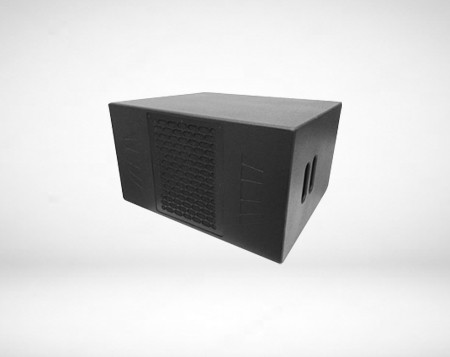source:Industry News release time:2022-06-15 Hits: Popular:Brand bar audio wholesale

Wireless microphones are often encountered in daily life, so do you know the difference between U-segment and V-segment wireless microphones? Let the jazz dragon manufacturer tell you:
1. The transmission signal of the transmitter
The V-segment wireless microphone transmitter part mainly uses several stages of frequency multiplication circuits to obtain high-frequency signals, and the signal carrier frequency of the transmitter is fixed.
Most U-segment wireless microphone transmitters use phase-locked loop technology to obtain high-frequency signals, and most of the transmitter frequencies are adjustable.
2. Receive the transmission signal from the host
The V-segment wireless microphone receiver is also made into a fixed frequency point.
Most U-segment wireless microphone receivers are made with adjustable receiving frequency.
3. Anti-interference ability
When there is an interference signal, it is difficult to avoid the V-segment wireless microphone, and the U-segment wireless microphone can easily avoid various interferences by adjusting the frequency of the transmitter and receiver. U-segment wireless microphones used for professional performances are often made into true diversity, that is, one microphone is received by two antennas, and the probability of breakpoints in the use of U-segment wireless microphones is extremely small (the well-designed UHF true diversity wireless microphones) ).
4. Signal Transmission Path
VHF radio frequency signal transmission has little reflection on small metal objects and can be diffracted; it can penetrate non-metallic objects such as the human body; the loss of the feeder is low, and the antenna can be appropriately extended; the battery can be used for a long time; , letter machine and industrial pollution such as electric welding, motor, etc. have large interference; the usable frequency range is 61MHZ, the expandable range is too narrow, the frequency is crowded when multiple microphones are used, and the compatible frequency is small; the dynamic range of the signal is small.
UHF radio frequency signal transmission has many reflections on small metal objects, and multi-path propagation can cause interference; the shielding and attenuation of non-metallic objects such as the human body is large; the loss of the feeder is large, and the receiver should be as close to the microphone as possible; large transmit power is required, and the battery The use time is short; the high frequency interference is less; the usable frequency range is 270MHZ, the expandable range is large, and multiple microphones can be used to form a larger system; the dynamic range of the signal is large.
Popular recommendation
XD18C Big sound bar Merchant
2021-07-26F1201 School audio Vendor
2021-07-16F81 Bar speaker company
2021-07-16Resolution 2 School audio company
2021-07-15XD12 Brand bar audio Vendor
2021-07-26Resolution 5T Touring KTV audio wholesaler
2021-07-16F215 MK2 ktv bar sound Factory
2021-07-14MB210 Low Profile Bar audio set Merchant
2021-07-14Dance Stack Overview Car stereo Factory
2021-07-16F315 Mini bar sound Vendor
2021-07-14MST 10Sound bar sales
2021-07-17Resolution 1.5TT Marten Audio company
2021-07-16The difference between professional audio and civil audio technology
2022-05-14How to use and clean your microphone during the pandemic.Banquet hall audio price
2022-09-19Shanghai MASTER bar audio recommendation Mateng audio
2022-11-22Xichang GT ROOM Net Red Bar Special Audio---Mateng Audio.Audio conference room
2022-04-15Audio output device layout in conference room.School audio sales
2022-04-22Professional audio intelligent system knowledge!Car stereo Vendor!Speaker bar Vendor
2021-10-22How to do maintenance work for professional audio.Large bar sound
2022-04-12Chongqing DNA high-end bar special audio---Mateng Audio,Conference room speaker price
2022-06-01Can home theater speakers also be used for karaoke?
2022-10-10An overview of amplifier standards for entertainment audio in bars
2022-03-04Tongxiang SPACE party bar sound system provided by Maarten Audio
2022-06-16Tips for using sound exciter.Bar speaker Vendor
2021-12-03